Henrik Mouritsen (referenced below at p. 237) summarised the history of scholarship on the seviri, seviri Augustales and magistri Augustales of the municipia of Italy:
-
“The time of Augustus ... experienced the rapid spread of two new civic titles - the Augustales [including seviri Augustales and magistri Augustales] and the seviri - who feature in hundreds of inscriptions from virtually every town in Italy. ... For more than 100 years, scholars have systemised [these inscriptions and other evidence], formulating theories about the organisational structure [of the respective magistracies], their membership, their civic and religious functions, and their status in the local community. Initially, they were seen as priests of the imperial cult, but this view has since been challenged ... it has [now] become fashionable to emphasise their role as a civic ordo, ranking well above the plebs and immediately below the decurions.”
Mouritsen himself argued (at pp. 244-5) against the existence of a formal ‘ordo’. Instead, he developed (at pp. 242-3) a model in which:
-
“The posts were honores but, unlike the [other civic] magistracies on which they were modelled, [they] had no civic authority. Theirs were, quite literally, empty honours, which held neither actual power nor ... any defined civic remit or function. ... [We might usefully] focus on the one element that made these honores real - which was their cost ... : the office-holders still had to pay their summa honoraria [entrance fee and continuing financial obligations due to the municipality]. ... These posts therefore represented attempts to widen the pool of public donors ... The new honores ... could be held by anyone, irrespective of birth, provided they had sufficient wealth.”
These magistracies thus provided a route by which men who were excluded from municipal power, often because of their status as freedmen, were nevertheless able to achieve civic prominence, provided that they could afford it. However, he pointed out (at p. 247) that:
-
“This does not mean that it was exclusively reserved for freedmen ...: there are many examples of freeborn Augustales and seviri, albeit with great regional and chronological variations. ... [There is also] considerable intra-regional diversity ...: [For example,] at Hisepllum, seven out of ten severi were explicitly freeborn, in sharp contrast to nearby Asisium, where that applied to just three out of 23 [as discussed in my page on Quinqueviri and Seviri at Asisium].”
-
I discuss this unusual feature of the seviri and seviri Augustales at Hispellum in the sections below.
Seviri
The seven free-born seviri cited by Henrik Mouritsen (above) are discussed in turn below.
Caius Alfius Quadratus
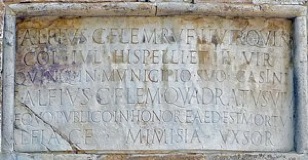
A funerary inscription (CIL XI 5278, 27BC - 14 AD) from an unknown location at Spello (now embedded in the façade of the church of San Lorenzo) commemorates members of the gens Alfia, which moved to Hispellum from Casinum at around the time of colonisation. They included:
-
✴Caius Alfius Rufus, son of Caius and a member of the Lemonia tribe, who was duovir quinquennalis of the Colonia lulia Hispellum after having held that post at Casinum, and who probably financed the construction of the amphitheatre of the sanctuary at Villa Fidelia; and
-
✴Caius Alfius Quadratus, son of Caius and a member of the Lemonia tribe, who was a sevir, an equo publico (a member of the equestrian order who enjoyed the privilege of a horse provided at public expense) and, at the time of his death, an aedile.
Clearly, the gens Alfia was among the prominent families of Hispellum.
Cnaeus Decimius Bibulus
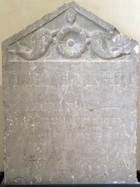
Titus Statius
As noted above, a now-lost funerary inscription (CIL XI 5286, 20 BC- 20 AD) from Fiaggia, some 5 km northwest of Bevagna reads:
T(itus) Statius T(iti) f(ilius)/ Lem(onia) sevir
This family is also attested at Spello itself:
-
✴an inscription (AE 1948, 0102, 30BC - 14AD), which was found near Porta Venere and which is now in Palazzo Bianconi, records a public project undertaken by the duoviri, one of whom was Quintus Statius, son of Publius; and
-
✴a now-lost funerary inscription (CIL XI 5340, date ??) from an unknown location in Spello commemorated the freedman Marcus Statius Chilo.
Thus it seems that the sevir Titus Status belonged to a family that was prominent in the public life of the colony.
Cnaeus Sentius Priscus
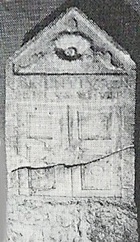
Caius Titienus Flaccus
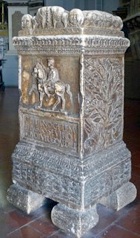
Lucius Vecilius Modestus
An inscription (CIL III 8261, early 2nd century AD) from Timacum Minus (in modern Serbia) commemorated Lucius Vecilius Modestus, son of Caius, an officer in the Sixth Legion (the Ferrata or ironclad legion). Modestus‘ presence at Timacum Minus was probably related to his legion’s participation in Trajan’s defeat of the Dacians in 106 AD. Modestus belonged to the Lemonia tribe and had previously held a number of civic posts in his home town: sevir, equo publico, aedile, duovir iure dicundo coloniae Hispellatium, quaestor twice and augur. He also belonged to the fifth decuria (division) of jurors at Rome.
Cnaeus Cornelius Pomponius Martialis
A now-lost inscription ( AE 1950 0082, 2nd century AD) from Spellowas dedicated to Cnaeus Cornelius Pomponius Martialis, son of Caius, of the Palatina tribe. His cursus was very similar to that of Lucius Vecilius Modestus (above): equo publico, sevir, aedile, duovir iure dicundo, quaestor twice, duovir quinquennalis and augur.
Seviri Augustales
Henrik Mouritsen (above) referred to three freedmen who were seviri at Hispellum. Unfortunately, he did not give references for them. I have have tracked down two, both of whom were seviri Augustales.
Titus Epidius Auctus
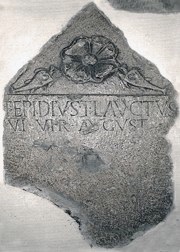
Marcus Rufars Stabilio Celer
A now-lost funerary inscription (CIL XI 5285: date ??) from an unknown location in Spello commemorated the freedman Marcus Rufars Stabilio Celer, who had worked as a coactor argentarius (banker ?) and served as a sevir Augustalis.
Conclusions
The preponderance of free born men among the severi at Hispellum was almost certainly a reflection of the fact that, at least in the early period, the population of Hispellum would have been largely made up of men who had done military service (a career that was not open to freedmen). However, the sevir at Hispellum depart from the model put forward by Henrik Mouritsen (above) in a more fundamental way: as Ségolène Demougin (referenced below, at p. 147, note 17) pointed out:
-
“In particular, at Hispellum, one finds ... equestrians whose careers began with the function of sevir” (my translation).
Her prime concern in this paper was with the career of Lucius Vecilius Modestus, who (as noted above) belonged to the fifth decuria (division) of jurors at Rome. In her note, she cited three other men from Hispellum who progressed from sevir to equo publico (all of whom are discussed above): Caius Alfius Quadratus, Caius Titienus Flaccus, and Cnaeus Cornelius Pomponius Martialis. All four progressed to the post of aedile:
-
✴Caius Alfius Quadratus held this capacity when he died, possibly at a comparatively early age (since he might have been expected to emulate his brother in achieving duoviral status);
-
✴Caius Titienus Flaccus also progressed no further, perhaps for the same reason;
-
✴Lucius Vecilius Modestus progressed to duovir iure dicundo, quaestor (twice) and augur; and
-
✴Cnaeus Cornelius Pomponius Martialis progressed to duovir iure dicundo, quaestor (twice), duovir quinquennalis and augur.
It is not clear, at least to me, why the sevirate at Hispellum provided the starting point for an equestrian/ municipal career at Hispellum over such a relatively long period of time: as far as I know, the sevirate did not play this role in the careers of the leading administrators in other Italian municipia.
The post of quaestor, which both Lucius Vecilius Modestus and Cnaeus Cornelius Pomponius Martialis held twice, is oddly placed in the cursus of each of them:
-
✴after the post of of duovir iure dicundo for Lucius Vecilius Modestus;
-
✴after the post of of duovir iure dicundo but before that of duovir quinquennalis for Cnaeus Cornelius Pomponius Martialis.
The significance of this is unclear, at least to me.
Read more:
H. Mouritsen , “Honores Libertini: Augustales and Seviri in Italy”, Hephaistos, 24 (2006) 237-48
L. Sensi, “Nuovi Testi Epigraficic di Età Romanoa da Spello”, Bollettino Storico della Città di Foligno, 11 (1987) 7-38
S. Demougin, “Les Juges des Cinq Décuries Originaires de l'Italie”', Ancient Society, 6 (1975) 143–202
H. Scullard, “From the Gracchi to Nero: A History of Rome 133 BC to AD 68”, (1959) London
Ancient History: Main Page Colonia Julia Hispellum
Seviri and Seviri Augustales at Hispellum Sanctuary at Villa Fidelia after Colonisation
Sanctuary at Villa Fidelia in the 4th Century AD
Return to the page on the History of Spello.



